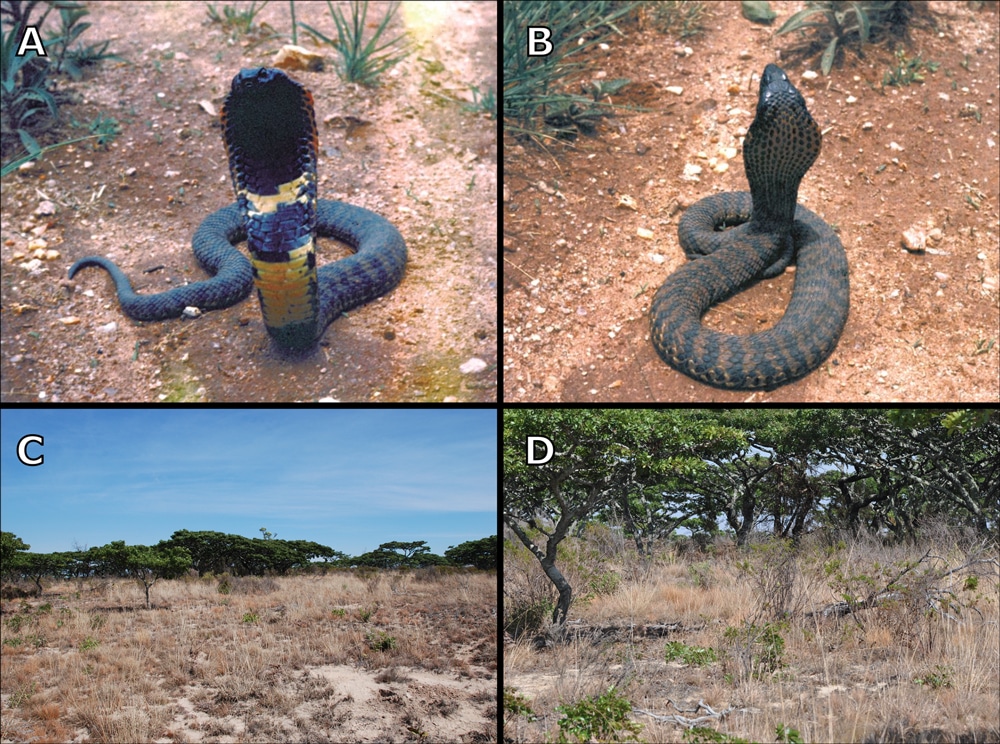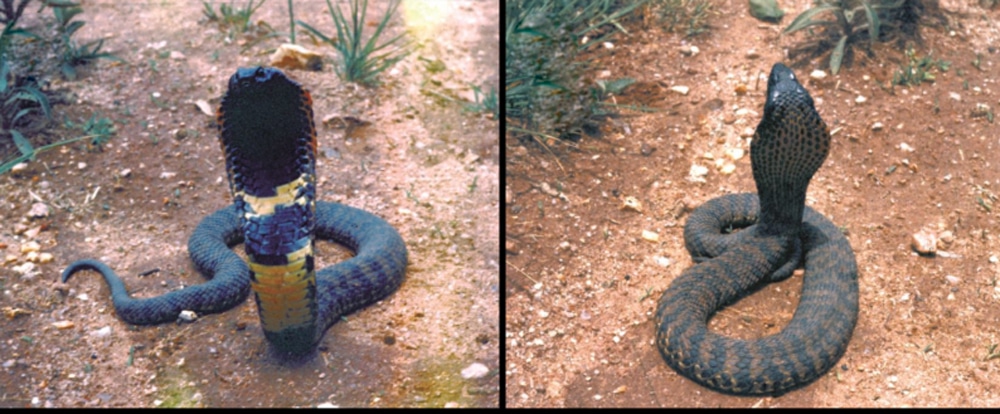Rinkhals, or the ring-necked spitting cobra is not a true cobra of the genus Naja, but belongs to the genus Hemachatus.
Researchers using museum genomics have discovered what they believe is a new, potentially extinct species of ring-necked spitting cobra, or rinkhals that once lived in Zimbabwe. The researchers believe the new species, Hemachatus nyangensis sp. nov represents “an old and highly distinct lineage” and demonstrates what the researchers call the “power of museum genomics in in revealing rare and even extinct species.”
“Hemachatus from Zimbabwe are only known from a small area of the Eastern Highlands known for high endemism,” the researchers wrote in their paper. “No living specimens have been seen since the 1980s, most likely due to dramatic land-use changes in the Eastern Highlands, suggesting that the species could be extinct. In view of its recognition as a highly distinct lineage, urgent action is required to determine whether any populations survive, and to safeguard remaining habitat.”

(A and B) Hemachatus nyangensis sp. nov. specimen in life, displaying defensive hooding posture. (C and D) Miombo woodland and grassland habitat of H. nyangensis sp. nov. Photo https://doi.org/10.1371/journal.pone.0291432.g005
The new species, Hemachatus nyangensis sp. nov is related to the true cobras of the genus Naja. Until now, its genus, Hemachatus, contained a single species, Hemachatus haemachatus. Rinkhals are well known for displaying a defensive hooded posture in the event they feel threatened, just like that of the true cobras. They are also known to spit venom at potential predators. The rinkhals are also known to give live birth as opposed to other Afro-Eurasian elapids which lay eggs. Hemachatus nyangensis sp. nov is believed to have inhabited the Republic of South Africa, Lesotho, Eswatini and eastern Zimbabwe.
Hemachatus was first known to science in the 1920s when it was reported forestry officer Mr J.W. Barnes. Barnes found the snake in Nyanga, which is the Eastern Highlands region of Zimbabwe. However, the reptile was not positively identified and no complete specimens were studied until 1961, when it was named H. haemachatus. The last known specimen was collected in 1982. The current study, by Tom Major, Pia Renk, Jens Reissig, Johanna L. A. Paijmans, Ellie Morris, Michael Hofreiter, Axel Barlow, Donald G. Broadley and Wolfgang Wüster, used mtDNA sequence divergence to determine that the rinkhals in Zimbabwe is a new species, Hemachatus nyangensis sp. nov.
Rinkhals Venomous Snake Information
Rinkhals, or the ring-necked spitting cobra is not a true cobra of the genus Naja, but belongs to the genus Hemachatus, which until now was a monotypic genus. There are now two species in the genus, the newly described Hemachatus nyangensis sp. nov, and H. haemachatus, the new Zimbabwe population. The snake grows to about 90 to 110 cm in length and black bodies. Some have stripes with two light colored crossbones on the throat, hence the name ring-necked spitting cobra. The scales are also distinct from cobras of the Naja genus in that they are ridged and keel-like.
The complete paper, Museum DNA reveals a new, potentially extinct species of rinkhals (Serpentes: Elapidae: Hemachatus) from the Eastern Highlands of Zimbabwe” can are read on the PLOS One website.


